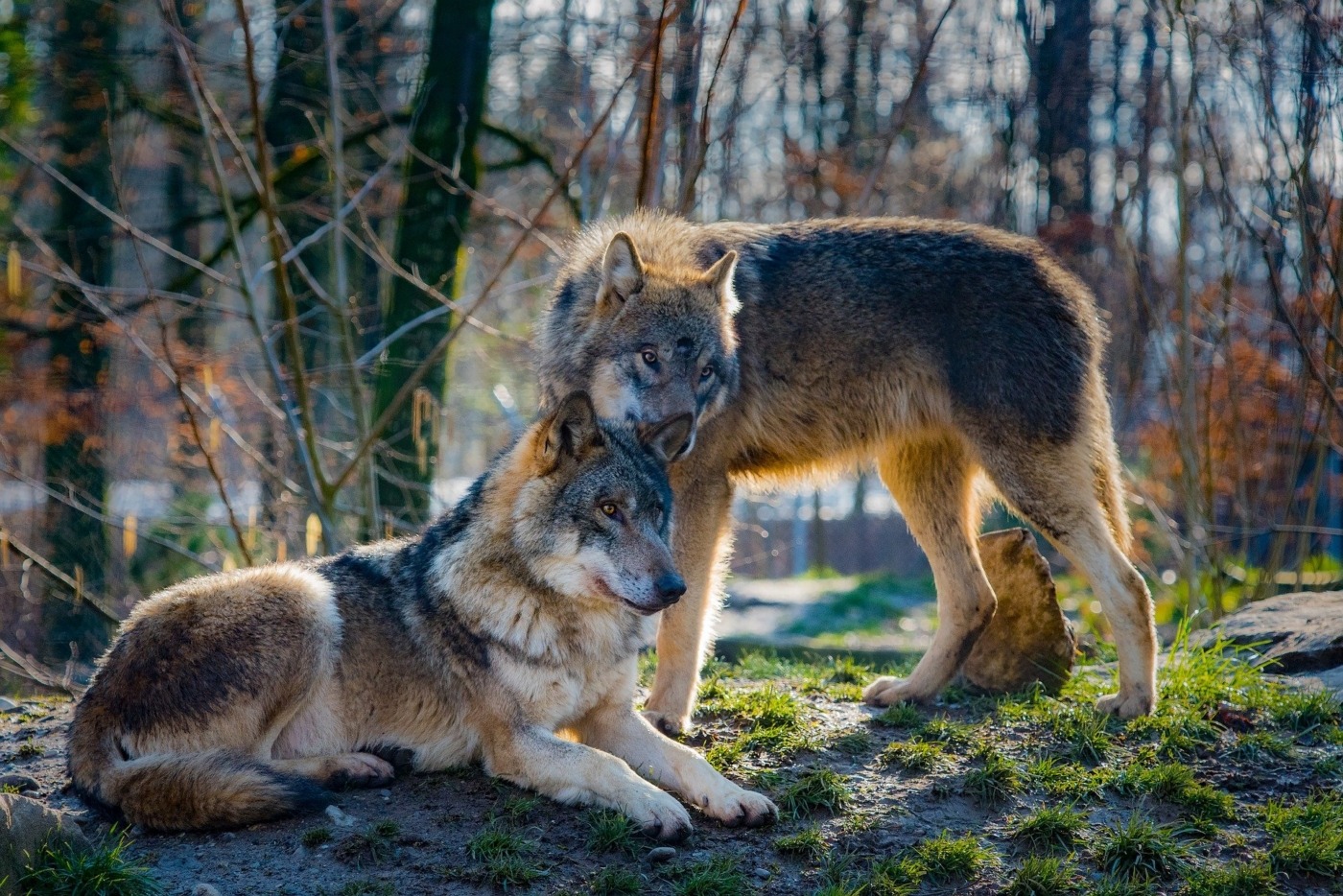The story of dogs and humans: the domestication of wolves during the last Ice Age was driven by meat sharing
At the peak of the last Ice Age, two species competed for prey across Eurasia. Both were highly intelligent pack hunters, capable of bringing down animals much larger than themselves through teamwork.
Humans and wolves (Canis lupus) held overlapping territories and exploited the same resources – a situation which should have put them firmly at odds. Yet, at some point between 29,000 and 14,000 years ago, the world saw the first ever domestication of an animal. Wild wolves became dogs (C. familiaris), forming a bond with hunter-gatherers which has outlasted the glaciers – and looks set to endure for as long humanity does. Teasing apart how this happened tells us as much about our own history and evolution as it does about the process of domestication.
Like any form of natural or artificial selection, domestication is a slow process
Like any form of natural or artificial selection, domestication is a slow process. It takes generations of selecting for traits, like docility, to turn captive wild animals into a cooperative companion for humankind. Life for ancient humans was harsh, particularly in the frozen conditions of Eurasia during the Ice Age. Anthropologists have questioned how these hunter-gatherers could have spared the resources to feed ancestral ‘proto dogs.’
A recent publication, led by Dr Maria Lahtinen from the Finnish Food Authority in Helsinki, has shed new light on the topic. Dr Lahtinen and her colleagues suggest that domestication may have been kickstarted by humans who were hunting more lean meat than they could safely consume.
The theory rides on the difference in nutritional requirements between humans and wolves. We are omnivores and need to balance out the calories that we get from animal protein with other foods, usually from plants or fats. Fed an exclusive diet of lean meat, the human liver simply cannot cope. This can lead to protein poisoning, sometimes referred to as ‘rabbit starvation,’ which can be fatal in the long term. “Because we humans are not fully adapted to a carnivorous diet, we simply cannot digest protein very well,” Dr Lahtinen told Scientific American. “It can be very fatal in a very short period of time.” The proportion of the human diet which can safely be made up of animal protein reaches a maximum at 45%. Wolves, on the other hand, thrive when fed an exclusive diet of animal protein, in the form of lean meat.
For all but one of 28 potential food sources, the amount of protein that a successful hunt would yield would have been too high to be consumed by humans
Dr Lahtinen and her colleagues studied locations where the remains of the ancestors of dogs were found, alongside evidence of human Ice Age activities. They looked at predictions of the climates in these areas at the time and used this information to reconstruct the probable prey species in the areas. For all but one of 28 potential food sources, the amount of protein that a successful hunt would yield would have been too high to be consumed by humans. Instead, hunters could have selectively butchered their kills, harvesting the fat they needed to survive and leaving the lean meat.
All this means that – counterintuitively – even during the harshest winters, meat was a waste product for early Eurasians. One species waste, however, is another’s treasure. With lean meat as an untapped resource, hunter-gatherers could have kept their animal companions fed from generation to generation. As a result, domestication of wolves occurred multiple times across Eurasia.
This is the first time that we have an ecological explanation for dog domestication
Interestingly, the bond formed between the two species is unlikely to have been functional in the beginning. Dogs can work alongside humans to preform amazing feats, ranging from hunting to protecting them from wild animals. This requires some of the most complex species-to-species communication seen on Earth. It is unlikely that the first few generations of captive wolves and proto dogs would have been capable of this. Rather, Dr Lahtinen’s study suggests that they would have been pets, kept for companionship. After a few generations of close interaction however, both species would have begun to reap the rewards of cooperative hunting and living. Even a slight advantage in the harsh world of pre-history may have been the difference between life and death for hunter-gatherers. As Dr Lahtinen told Scientific American: “this is the first time that we have an ecological explanation for dog domestication.”
The domestication of plants and animals was a key turning point in the development of human societies. This new work, published by Dr Lahtinen and her colleagues, points toward a very human story behind a momentous shift in the world’s history. Whether you have your own C. familiaris living in your home, or simply enjoy scrolling through dog memes on the internet, you may have a hunter-gatherer, seeking companionship by offering a scrap of meat to a wolf in the cold and distant past, to thank.

Comments